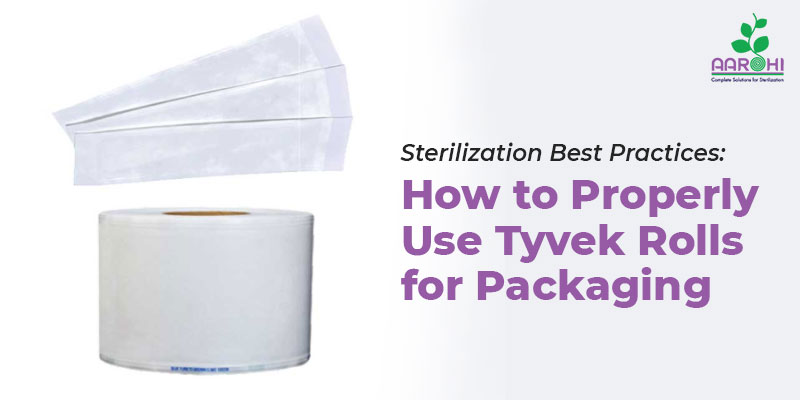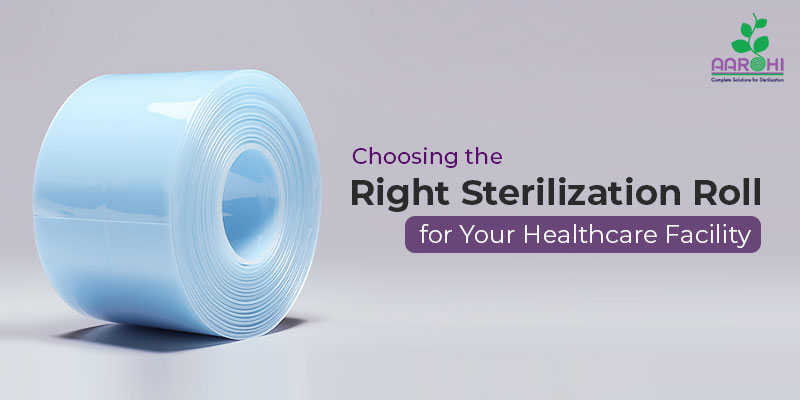Introduction
Tyvek - a synthetic material developed by DuPont, has gained widespread recognition for its exceptional qualities and diverse applications.
The healthcare industry uses Tyvek material due to its durability, efficiency, sustainability, and other unique properties that make it useful.
This detailed guide aims to provide comprehensive insights into Tyvek rolls, pouches, and header bags, shedding light on their benefits and the various applications they cater to.
Let’s delve in.
What is Tyvek?
Tyvek is a brand of synthetic flash-spun high-density polyethylene fabrics. It is a nonwoven fabric that is made from continuous filaments that are laid down randomly and then compressed to form a sheet.
This creates a material that is both strong and lightweight, with a distinctive paper-like appearance and feel. Tyvek is a versatile material - used in a variety of applications.
Two types of Tyvek products are used - paper-like hard Tyvek material and fabric-like soft Tyvek material in design and consumer applications, which come in multiple grades.
Key Properties of Tyvek
The unique properties of Tyvek make it ideal for a number of applications. Such as;
1. Water and Liquid Resistance
Tyvek is highly resistant to water and liquids. This is because the fibers in Tyvek are very tightly packed together, and the surface of the material is very smooth. This makes it difficult for water and liquids to penetrate the material.
Tyvek is also resistant to liquid penetration under pressure, which makes it a good choice for applications where liquid containment is important.
2. Breathability
Tyvek is a breathable material, which means that it allows air and moisture to pass through. This is important for applications where Tyvek is used to protect people or products from moisture, but it also needs to be breathable.
For example, Tyvek is used to make protective suits for workers who are exposed to hazardous materials, but it also needs to be breathable so that the workers can stay comfortable.
3. Durability and Tear Resistance
Tyvek is a very durable material that is resistant to tearing, abrasion, and punctures. It can withstand a lot of wear and tear, and it’s not easily damaged.
This makes Tyvek a good choice for applications where it will subjected to harsh conditions, such as construction sites or industrial settings.
4. Chemical Resistance
Tyvek is resistant to a wide range of chemicals, including acids, bases, and solvents. This makes Tyvek a good choice where it will be exposed to chemicals, laboratories, or other industrial settings.
In wet conditions, usually, a paper absorbs humidity and falls apart, but Tyvek repels the water. Tyvek is produced to endure temperatures ranging from -70 Celsius to +180 Celsius.
5. Lightweight and Flexible
Tyvek possesses a remarkable strength-to-weight ratio with a very lightweight material while also being flexible. This feature in Tyvek makes it easy to handle and work with.
For applications where weight is a concern, Tyvek happens to be a good choice. Tyvek can be shaped to fit the contours of an object.
6. Sterilization Compatibility
Tyvek can be sterilized using a variety of methods, including steam, ethylene oxide, and gamma radiation. Tyvek is an ideal choice for applications where sterilization is needed, such as in medical and pharmaceutical applications.
Tyvek Rolls
Tyvek rolls are large rolls made of Tyvek material to use in various applications. It is a popular material due to its breathability, durability, and water resistance.
Tyvek rolls benefits its applications with;
- Strength
- Tear-resistance
- Dust-proof
- Water-proof
Tyvek rolls don’t easily break or tear as easily as medical-grade paper does.
Applications of Tyvek Rolls
1. Medical Packaging
Tyvek rolls are widely used in the medical industry for packaging sterile medical devices and supplies. Tyvek rolls are resistant to gamma irradiation and ethylene oxide gas, which are commonly used to sterilize medical equipment.
2. Constructions and building
Tyvek rolls are used in a variety of construction and building applications, including house wrap, roof underlayment, and industrial liners. Tyvek rolls are also used to make temporary enclosures and dust barriers.
3. Art and Craft
Tyvek rolls are a popular material for artists and crafters because it is lightweight, tear- resistant, and easy to paint or print on. Tyvek rolls can be used to make a variety of art projects, including masks, costumes, and jewelry.
4. Envelopes and Packaging
Tyvek rolls are used to make envelopes and packaging because of their resistance to water and chemicals. Tyvek envelopes are often used to mail documents and packages.
Tyvek Pouches
Tyvek pouches are the top choices for pharmaceutical manufacturers to package terminally sterilized medical devices.
Some of the benefits of using Tyvek pouches are;
- Microbial resistant
- Non-toxic
- Strong and durable
- Water-resistant
Tyvek pouches are versatile packaging solutions offering their benefits to multiple applications.
Applications of Tyvek Pouches
1. Medical Packaging
Tyvek pouches are widely used in the medical industry for packaging sterile medical devices and supplies. Their resistance to gamma irradiation and ethylene oxide gas, helps healthcare professionals to completely sterilize the product.
2. Electronic Packaging
Electronic devices usually have high value and are sensitive. Electronic components, such as circuits, boards, and semiconductors can be packed with Tyvek pouches. They protect components from moisture, static electricity, and electromagnetic interference(EMI).
3. Food and Beverage Packaging
Tyvek pouches are used to package a variety of food and beverage products, such as coffee beans, tea leaves, and spices. They protect the products from moisture, odors, and tampering.
4. Protective Pouches
Tyvek pouches are used to protect a variety of items from damage, including jewelry, electronics, and documents. They are also used to store and protect items during shipping and transportation.
5. Arts and Crafts
Tyvek pouches are used by artists and crafters to create a variety of items, such as bags, wallets, and book covers. They are also used to store and protect art supplies.
Tyvek Header Bags
Header bags made with Tyvek have superior puncture resistance quality rather to the header bags made of medical-grade papers.
Benefits of using Tyvek header bags include;
- EO sterilization
- Moisture resistance
- Microbial barrier
- Aseptic remover
- Puncture resistance
Applications of Tyvek Header Bags
1. Pharmaceutical Packaging
The pharmaceutical industry uses Tyvek header bags to pack pharmaceutical products including drug delivery systems, ampoules, vials, and others. They help to maintain the sterility and quality of packed items.
2. Biology and Research
The research and biotechnology laboratories use Tyvek header bags to pack and preserve biological samples, cell cultures, and other sensitive materials.
3. Electronic Component Packaging
The non-dusting, non-linting, and stronger seal properties of the Tyvek header bags make them appropriate for electronic components to avoid EMI.
4. Sterilization Pouches
To sterilize the medical devices and supplies, Tyvek header bags are used as sterilization pouches. They enable EO sterilization in film-film packages and foil pouches.
Enduring Solution!
We understand how securing medical devices and supplies can become a concern sometimes, as safety comes first. But with materials like Tyvek and trustworthy manufacturers of medical sterilization products like ours by your side, there is nothing to worry about. We are dedicated to manufacturing and supplying quality packaging solutions for medical devices to give you enduring sterilization solutions.




